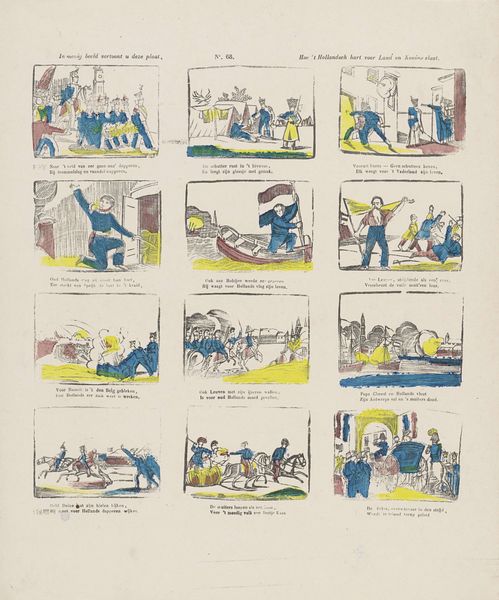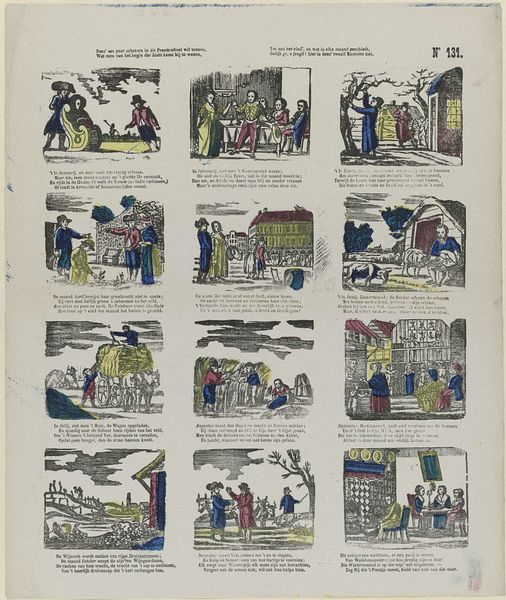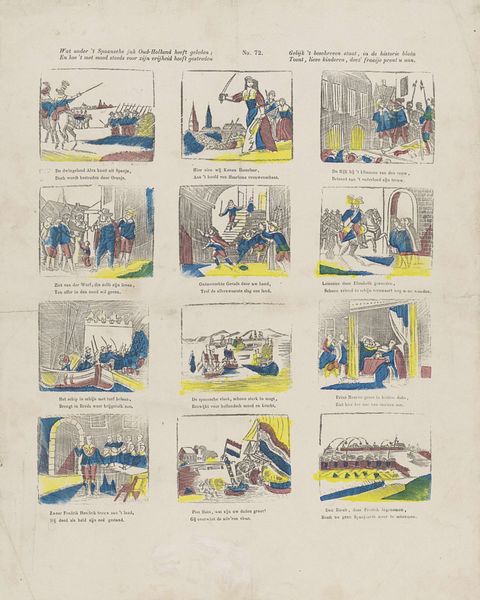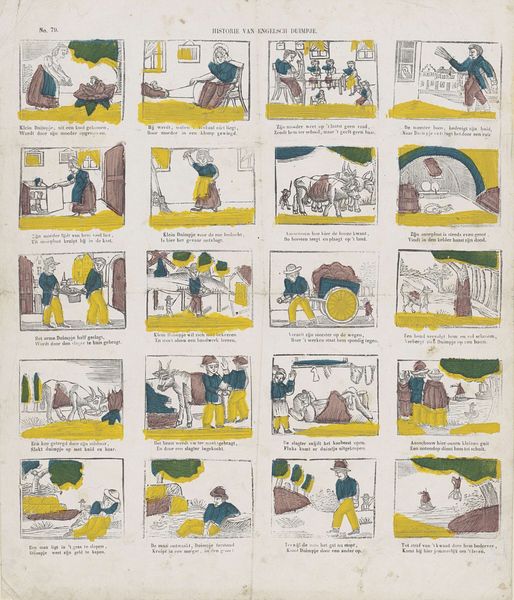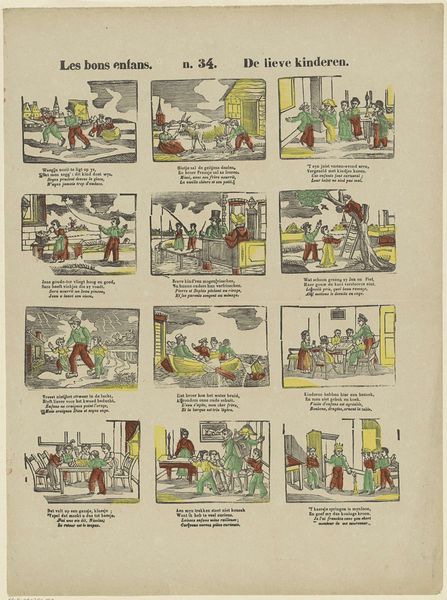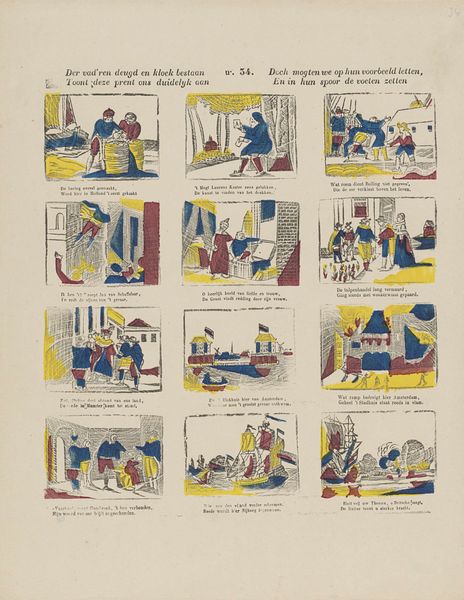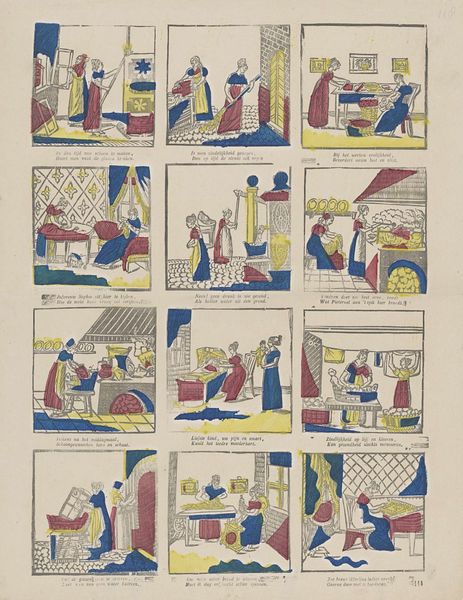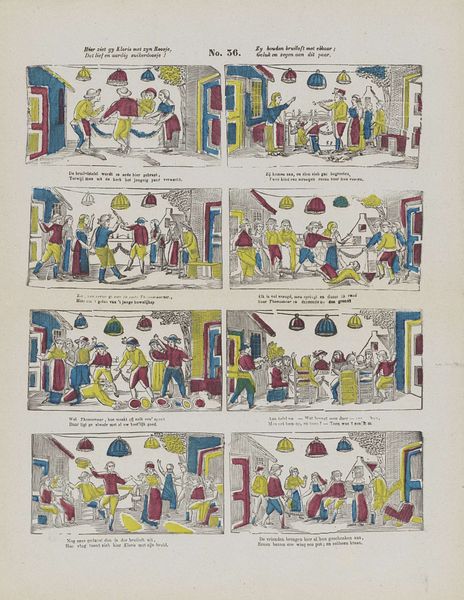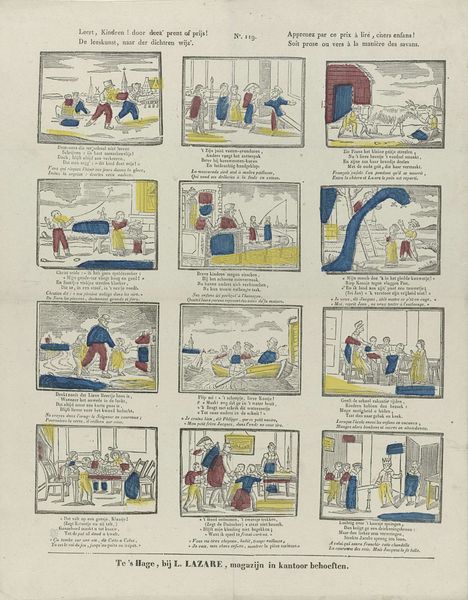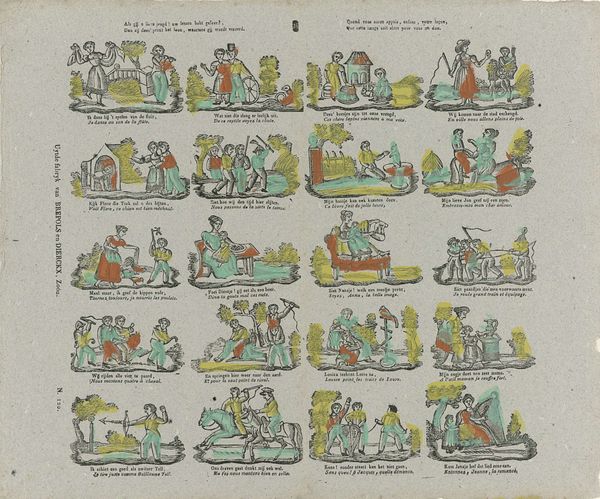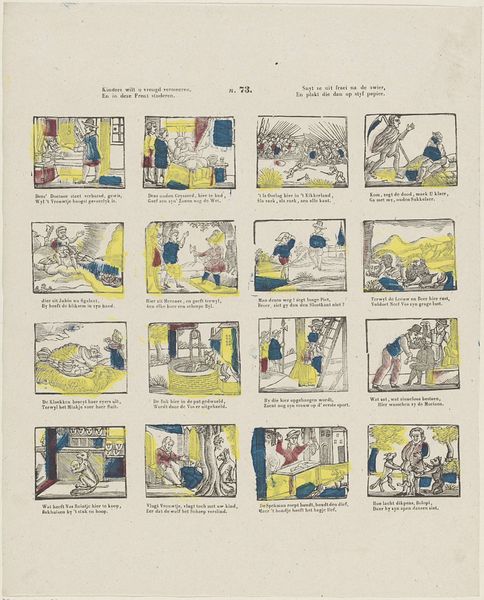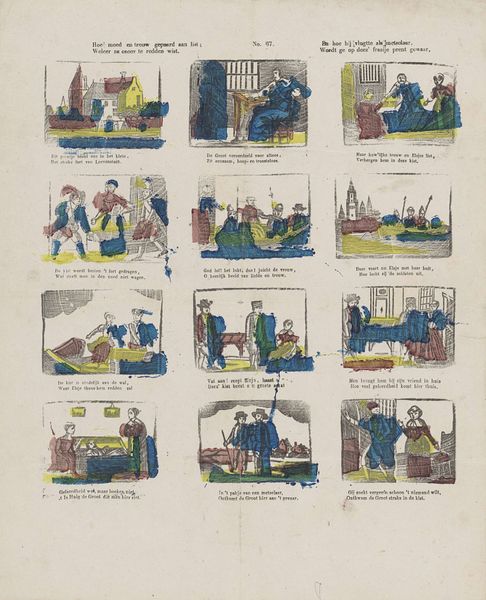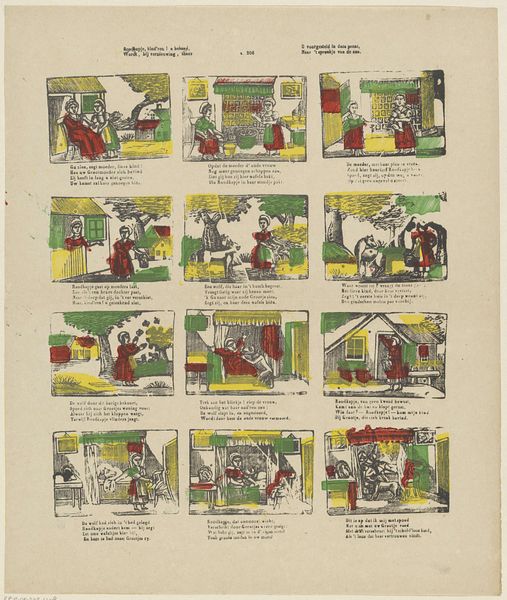
Deez' prent vertoont in menig beeld / Oud-Hollands roen in vroeger dagen; / En hoe der vad'ren heldenteelt, / Het leven steeds voor 't land dorst wagen 1848 - 1881
0:00
0:00
graphic-art, print
#
graphic-art
#
narrative-art
# print
#
ukiyo-e
#
history-painting
Dimensions: height 390 mm, width 307 mm
Copyright: Rijks Museum: Open Domain
Curator: This print, "Deez' prent vertoont in menig beeld," made between 1848 and 1881 by Lutkie & Cranenburg, feels almost like a comic strip, with all these little scenes laid out. They all seem to depict different historical moments. What strikes you most about this organization of scenes? Editor: It does remind me of a comic. The overall impression is kind of busy, almost overwhelming. How should I interpret the grouping of these seemingly disparate moments from Dutch history? Curator: That perceived disarray might actually be intentional. This was a time when national identity was really being codified and communicated through popular imagery. Prints like these circulated widely. But how "accurate" do you think they are? Were they intended as literal historical records, or something else? Editor: I guess they weren’t made to be documentary photographs. Maybe they are instead promoting an idealized version of Dutch history? Curator: Exactly. Notice how certain themes reappear across different scenes – naval prowess, for instance, or sieges? These wouldn’t just be records, but powerful statements about national character. This piece engages directly with questions of Dutch identity. How does it portray it? What message do you think the creators were aiming for? Editor: I think it romanticizes war and bravery to suggest this is key to the nation’s identity. Knowing that helps to see how this work would have resonated at the time, playing on those patriotic sentiments. I hadn’t thought about the role prints played in forging these kinds of narratives. Curator: Precisely. These weren’t passive illustrations; they were actively constructing a shared historical understanding and national pride, reminding viewers what it meant to be Dutch during the mid-19th century. It really underscores the potent role visual culture plays in solidifying national identity.
Comments
No comments
Be the first to comment and join the conversation on the ultimate creative platform.
